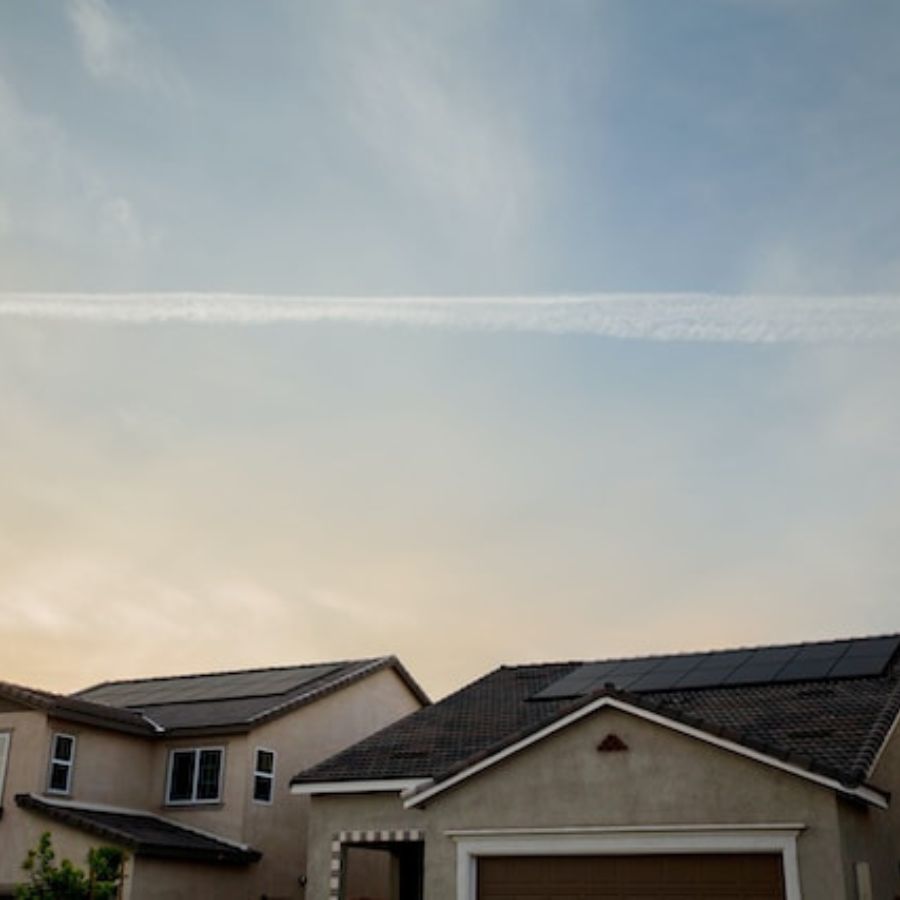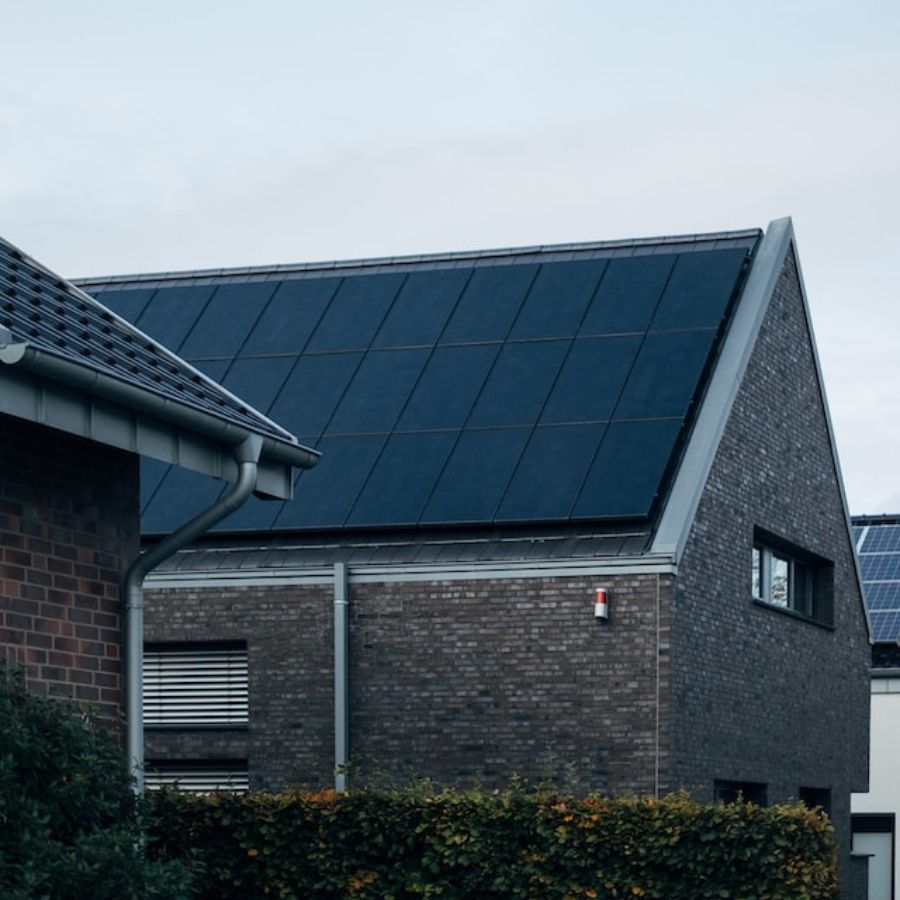In an era driven by sustainable energy solutions and a growing emphasis on reducing carbon footprints, solar power has emerged as a promising alternative to traditional energy sources in Canada.
Harnessing the sun’s abundant energy through solar panels has become an attractive option for homeowners looking to reduce their reliance on the grid and lower their electricity bills.
If you’re considering transitioning to solar energy, a question often arises: “How many solar panels do I need to generate 1000 kilowatt-hours (kWh) per month?”
Finding the optimal number of panels requires understanding various factors, such as peak sun hours and the size of your solar array.
This article will delve into these considerations to help you determine the correct number of solar panels needed to achieve your energy goals efficiently and sustainably.
Let’s get started.
Steps to Calculate the Number of Solar Panels Needed for 1000 kWh per Month

Installing solar panels is an excellent way to harness renewable energy and reduce your reliance on traditional power sources.
Considering a solar panel system for your home or business and aiming to generate approximately 1000 kWh per month, it’s essential to calculate the number of solar panels required to meet this energy goal.
Let’s explore the exact steps to determine the PV panel quantity for your needs.
1 – Determine Your Energy Usage
One of the primary factors that will influence the size of your solar energy system is your monthly and yearly power usage.
You must first understand your current electricity consumption to determine how many solar panels you need.
Review your utility bills to identify the average monthly kilowatt-hour (kWh) usage.
Remember that energy needs may vary throughout the year due to seasonal fluctuations in weather conditions and usage patterns.
Start by assessing your monthly energy usage in kilowatt-hours (kWh). Then, review your utility bills or energy statements to obtain an accurate figure.
In this case, we’ll use the target of 1000 kWh per month.
2 – The Amount of Sunlight in Your Area
Another crucial aspect to consider when determining the size of your solar system is the climate and the amount of sunlight your area receives.
Different regions experience varying levels of solar radiation, directly impacting the amount of solar power one can harness.
Areas with more sun exposure tend to generate more electricity from solar panels, while regions with frequent cloudy or rainy days may produce less.
To assess the solar potential of your location, you can refer to data on average peak sun hours.
Peak sun hours represent the hours during the day when sunlight is strong enough for efficient solar power generation.
By understanding the peak sun hours in your area, you can estimate how much solar power your panels are likely to produce.
3 – Assess Solar Panel Efficiency
Solar panel efficiency refers to the ability of the panels to convert sunlight into usable electricity.
Higher-efficiency panels can produce more power for a given area, making them an attractive option for limited space.
Efficiency is typically expressed as a percentage, representing the proportion of sunlight that lets a solar panel produce electricity.
When calculating how many solar panels you need, consider the efficiency of the panels you’re considering.
More efficient panels require less surface area to generate the same amount of electricity as less efficient ones.
However, higher-efficiency panels often come at a higher cost. Therefore, balancing efficiency with cost is essential when determining the optimal size of your solar system.
Through photovoltaic cells, solar panels transform sunlight into energy. Furthermore, the amount of energy that a solar panel produces and the efficiency of PV panels varies, typically ranging from 15% to 20%.
This efficiency value represents the percentage of sunlight the PV panel can convert into usable electrical power.
4 – Account for Solar Panel Output
To calculate how much power a PV panel can produce, multiply its efficiency by the sunlight it receives.
Generally, this value is in peak sun hours. For example, if a PV panel has an efficiency of 18% and receives five peak sun hours daily, it will generate 0.18 * 5 = 0.9 kWh per day.
5 – Determine the Required Solar System Size
Divide your desired monthly energy usage (1000 kWh) by a solar panel’s average daily energy output.
Using the example above, if a solar panel generates 0.9 kWh per day, 1000 kWh divided by 0.9 kWh per day equals approximately 1112 days (or 37 months).
6 – Account for Weather and System Losses
Considering weather variations and energy losses within the solar panel system is essential.
Cloudy days, shading, and system inefficiencies can affect actual energy production. Therefore, adding a buffer of around 10% to 20% to the calculated solar panel quantity is advisable to compensate for these factors.
7 – Calculate the Final Number of Solar Panels

Finally, we will discover how many solar panels you would need.
Multiply the monthly energy output of a single solar panel (0.9 kWh in our example) by the number of months (37 months) and the buffer factor (let’s assume 1.2 or 120%).
The result will give you the approximate number of solar panels needed for the solar array. In this case, it would be approximately 0.9 kWh 37 months 1.2 = 39.96 kWh, rounded to 40 solar panels.
Remember that these calculations provide an estimate, and the number of solar panels required may vary based on geographical location, panel orientation, and shading.
It’s always recommendable to consult with professional solar panel installers or energy experts who can provide tailored advice specific to your situation.
Following these mathematical steps, you can determine how many solar panels you need to generate approximately 1000 kWh monthly.
Investing in a domestic solar system helps reduce your carbon footprint and provides long-term energy cost savings while promoting clean, renewable energy.
Frequently Asked Questions
What Affects Solar Panel Output Efficiency?
Several factors can influence the efficiency of solar panel output.
The key factors include:
- the quality and type of solar panels used
- the angle and orientation of the solar panels toward the sun
- the amount of shading or obstruction
- the cleanliness and maintenance of the panels
- the temperature
Ensuring optimal conditions and proper installation can maximize the efficiency of your solar panels.
How Much Does A 1000 Kw Solar System Cost?
The cost of a 1000 kWh solar system can vary depending on factors such as the location, quality of components, installation complexity, and available incentives.
The average cost of solar installations in Canada ranged from $2.50 to $3.50 per watt, including installation.
Considering a 1000 kWh solar system would generate about 1000 kWh per year (assuming an average of 4 hours of peak sunlight per day), we estimate the system size based on the average electricity production of solar panels.
A conservative estimate would be a 4 kW system (4000 watts). Multiplying this by the cost per watt, the total cost would range between $10,000 and $14,000.
However, it’s important to note that solar costs can change over time due to fluctuations in market prices and the evolving solar industry.
It is recommendable to obtain multiple quotes from reputable solar installers in your area to get accurate and up-to-date pricing information for your specific circumstances.


Leave a Reply